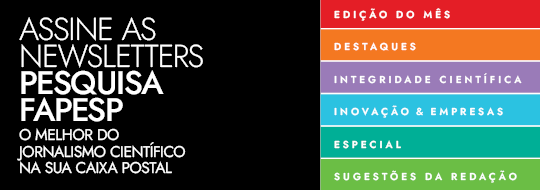 MIGUEL BOYAYAN
MIGUEL BOYAYANIn an article published on April 27 in the journal Science, Luiz Davidovich and his colleagues from the Quantum Optics Laboratory of the UFRJ Physics Institute showed how entanglement, an essential property for the functioning of quantum computers, can disappear abruptly.
Entanglement is a phenomenon that causes a set of particles to share certain properties as if telepathically, i.e., with no physical connection between them. This only happens on a very small scale, close to the size of an atom, in which the laws of classical physics give way to quantum mechanics. Imagine the possibility of throwing a pair of dice so that they always add up to seven. Until the dice is thrown, one cannot know which number will appear on the second. However, if the first dice falls showing number four, one can state that the second dice, when it is thrown, will produce a three. From the point of view of quantum mechanics, while the dice are being rolled, the probability of any one of the numbers appearing is the same. Physicists interpret this situation as if the dice showed the six numbers at the same time.
This lack of definition, called the superposition of states, lies at the core of quantum information theory, which explores the effects of the quantum world upon the storage, transmission and processing of information. Whereas the bits of a classic computer correspond to one single state at a time (the famous zero and one of the binary system), the bits of a quantum computer, called qubits, can have different states simultaneously. Thus, a processor comprising quantum bits (atoms, electrons or other particles) would be able to carry out a huge number of calculations at the same time, and its power would double with every bit added.
It just so happens that the abrupt loss of entanglement would jeopardize the working of the system, as one would lose control over the information coded within these qubits. Resuming the metaphor, it would be as if the second dice were to start producing a random result after the first one was cast, the sum of the two ceasing to always be the expected figure.
Sudden death
Called sudden death of the entanglement, the effect observed by the UFRJ team had already been foreseen by theoretical physicists. In an article published in 2006 in Physical Review A, Davidovich with other colleagues formulated a method for observing the disappearance of the quantum link between particles. In the experiment explained in the Science article, the team implemented an adaptation: instead of using atoms, they worked with photons, the elementary particles of light. The different levels of energy of the atoms were simulated by the polarization of photons, the direction of the vibration of their magnetic field, vertical polarization corresponding to the highest energy level, and horizontal polarization to the lowest.
 MIGUEL BOYAYAN
MIGUEL BOYAYANThe reason for the early loss of the entanglement is the interaction of the system with the environment: as the particles lose energy to the environment, the intensity of the entanglement lessens. However, there are states in which the sensitivity to the environment’s interference is lower. “In our experiment, photons with vertical polarization were more sensitive than photons with horizontal polarization”, explains Marcelo de Almeida. First author of the Science article Almeida is currently at the University of Queensland, in Australia, looking for more efficient sources of entangled photons and the means for miniaturization of experiments such as the UFRJ one. The work in Queensland aims at building a quantum computer prototype financed by the US armed forces. Finding ways to prolong the entanglement will be essential for realizing the full potential of quantum computing. “Without entanglement, a quantum computer would become a classic computer”, says Davidovich.
Republish